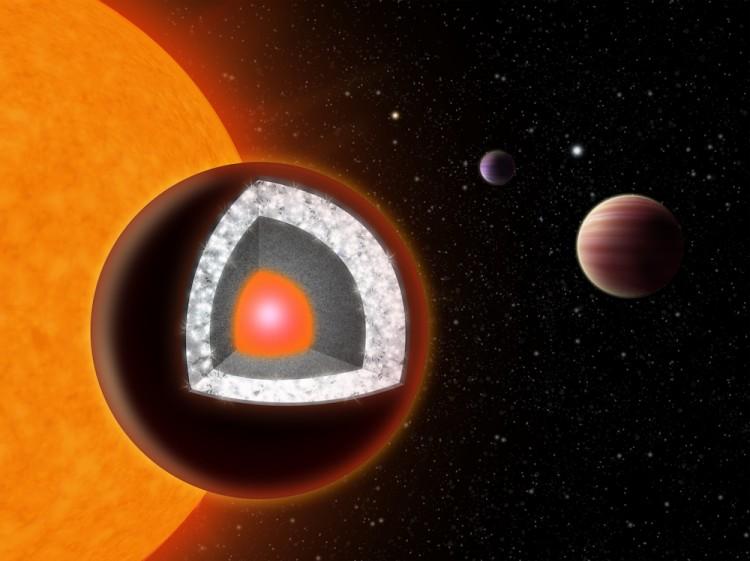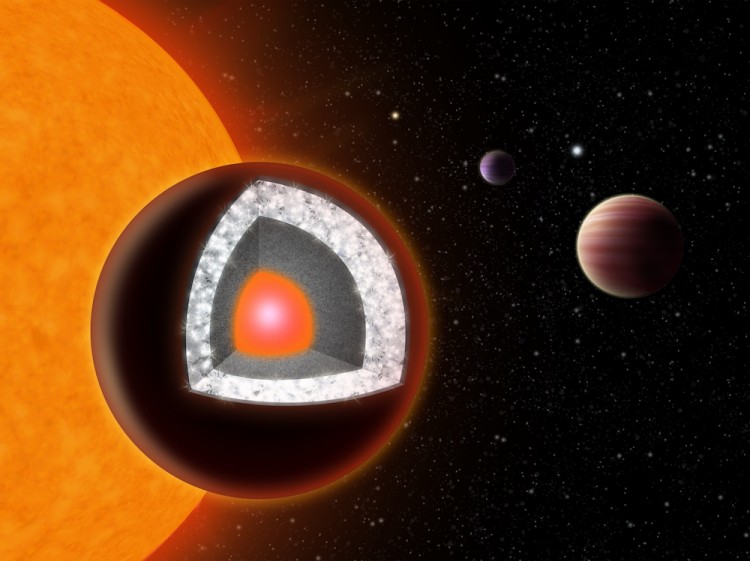A recently discovered super-Earth orbiting a nearby star may be at least one-third diamond.
Known as 55 Cancri e, it is one of five planets circling the sun-like star, 55 Cancri, situated 40 light-years away in the constellation of Cancer.
This rocky planet has a mass eight times that of our planet, and is about twice its size. Its orbit is only 18 hours, and it is extremely hot at a temperature of about 3,900 degrees Fahrenheit (about 2,150 degrees Celsius).
The researchers modeled the planet’s chemical composition using its radius and an estimate of its mass to determine which combinations of elements would produce these characteristics.
“This is our first glimpse of a rocky world with a fundamentally different chemistry from Earth,” said lead researcher Nikku Madhusudhan at Yale University in a press release.
“The surface of this planet is likely covered in graphite and diamond rather than water and granite.”
The results suggest that the planet does not contain any water and is mostly composed of graphite, diamond, iron, and silicon carbide.
“By contrast, Earth’s interior is rich in oxygen, but extremely poor in carbon—less than a part in thousand by mass,” said study co-author Kanani Lee, also at Yale, in the release.
Such a carbon-rich interior could affect thermal evolution and plate tectonics in the planet, influencing geophysical processes such as volcanism and seismic activity.
The study will be published in Astrophysical Journal Letters.
The Epoch Times publishes in 35 countries and in 19 languages. Subscribe to our e-newsletter.





